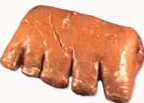About Rainbow Donut and reviews
RAINBOW DONUTS PHOENIX
FREE WI-FI
Enjoy our Donuts and Deli whilesurfing the internet!
Our Mission is to provide people with the BEST donuts!, great food, friendly service, and a fun place to hang out.
Our precious donuts
Cake DonutsCake-like donuts
Made from sweetened dough that is leavened with baking powder.
Fluffy, airy texture
Crispy donuts like eating a flavored cloud
GOURMET PASTRIES
For only - .69
Try them all:
- Filled Croissants
- Turnovers
- Danish
- Custard Raisin Rolls
WEEKLY SPECIAL!
Your choice of any burrito, croissant, bagel sandwich.
Also includes a donut and a medium coffee.
Your choice of a bagel, toast, or croissant sandwich.
Also includes a donut or chip, and a 24 oz soda.
Your choice of any 10 in sub,
with a donut or chip and a 32 oz fountain drink.
Not just Donuts! You also have to try these
MuffinsOur muffins varies fromCream Cheese, Banana Walnut, Blueberry, Chocolate Chip, Banana Chocolate Chip, Strawberry
only .99Our Croissants varies from Butter Croissant, Blueberry Cream cheese, Chocolate Chip, and many more.
only .69Our fresh smoothies flavor: Green Tea, Mango, Honeydew, Thai iced tea w/ boba, Coconut, Taro, and Strawberry
16oz - .9920oz - .79
HOURS
Monday 05:00 am - 06:00 pmTuesday 05:00 am - 06:00 pmWendsday 05:00 am - 06:00 pmThursday 05:00 am - 06:00 pmFriday 05:00 am - 06:00 pmSaturday 05:00 am - 06:00 pmSunday 05:00 am - 06:00 pmReviews:
wiseoldbull
Breakfast sandwiches are huge, very good and inexpensive. Great assortment of doughnuts. Loved the apple fritters.
3Tcubed
Considering that I drop by this place twice a week, and have for years; I’d never posted a review. Well they are my favorite donut shop, they have a couple booths but most of their business is take away. The ladies that run this shop...
tomneely1
The best donuts in the Phoenix area. Multi. Locations all god there chocolate tailed are the best unless you like maple long john
csabol
My friend told me about this place and said its the best she has ever had! So I stopped in here to grab some doughnuts for my parents and they LOVED them! The size of the doughnuts are sooo BIG! They said that they were...
Diane M
I love these donuts. I am a chocolate person, through and through although the blueberry cake donut is clearly my favorite. Completely addictive!
wvfans
The place was very busy and I had high expectations based on reviews. I was not impressed and my son wouldn't even eat his donut or donut holes. Not sure what went wrong today but this was a bust.
KidRockGirl
Rainbow Doughnuts has THE BEST donuts I have ever had!!! Definitely recommend anyone of their locations. Stop in and grab a taste of Heaven!!!
RiotMaker88
Really great donuts. Super fresh and flavorful. The chocolate cake donuts and red velvet where perfect. Also tried the creme brulee speciality donut and it's like a tasty dessert! The frosting and glaze on the donuts aren't over powering. The price is right. I highly...
dlschr
They have the best donuts in Phoenix. There is no trans-fats. They use soy oil to fry them. I totally recommend this place.
M2922DHkarenh
Freshly made! Yes-the original. If I am on a sugar binge- I satisfy my fix with their yeasty, filling donuts. I don't have a fave- I just cruise the case and let my tummy do the picking!










